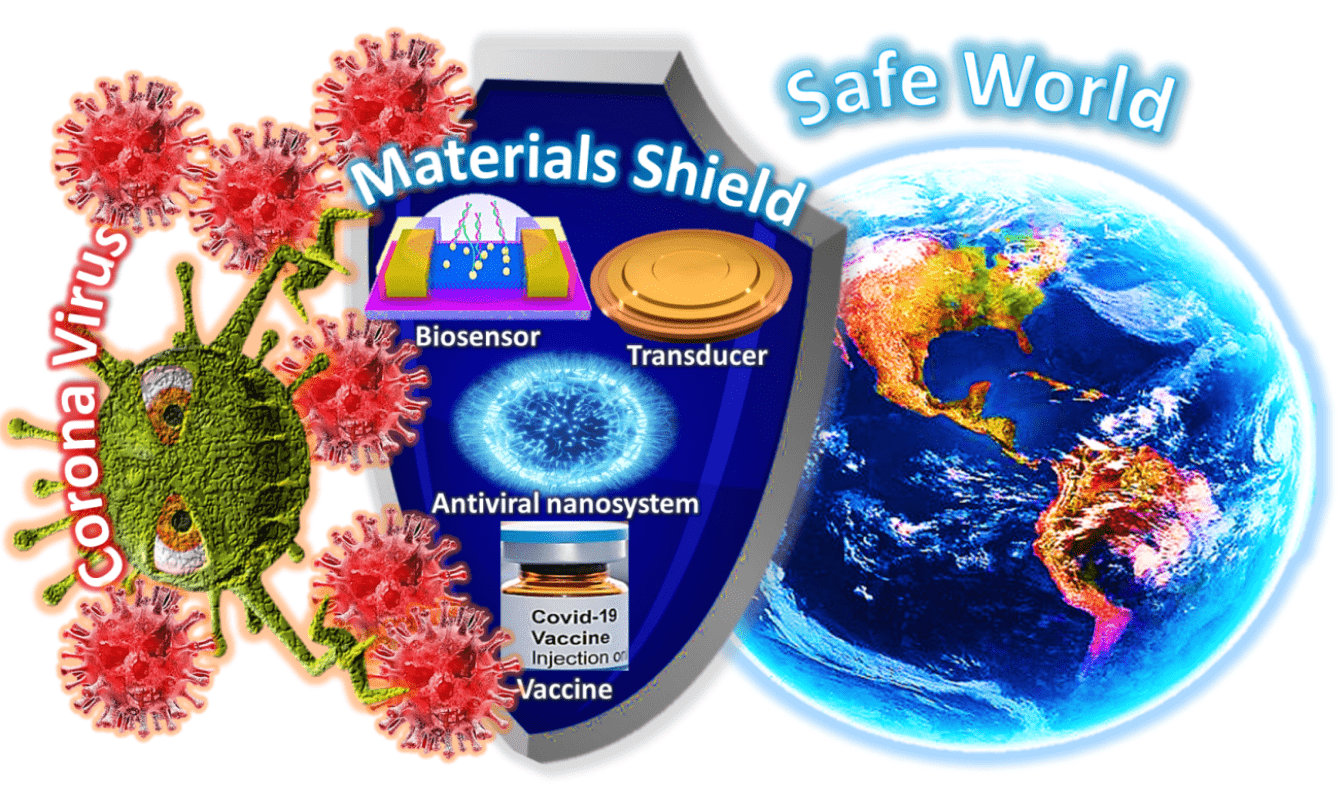Advanced Materials Shield Against COVID-19 Moving Towards a Safe World
Ayesha Kausar, National Center for Physics, Islamabad, Pakistan
Materials innovations have beneficially assisted to change, urbanize, and develop the world, since times. Now under this unexpected situation, materials science and technology revolutions are indispensable to help the present-day COVID-19 pandemic-troubled world. In other words, materials advancement is a key towards the ground-breaking solutions in coronavirus world war. This virus is not only a threat for human beings in terms of morbidity but also have a stagy economic impact. Therefore, a well-aligned and mutually coordinated global vision is desired on the advanced materials to resolve this pandemic state. Taking this opportunity, I urge the scientists and researchers to come towards the growth and implementation of advanced materials based upheavals to fight the world-wide health emergency. Sequentially, the current epidemic necessitates the development of innovative materials not only to detect the virus, but also to treat it.
Coronavirus disease 2019 (COVID-19) pandemic is instigated by severe acute respiratory syndrome coronavirus (SARS-CoV) virus [1]. To cure the SARS-CoV virus, different materials have been suggested, produced, and continually researched to be employed for vaccines, anti-viral nano-systems, biosensors, and transducers in all over world scientific community [2]. This virus pandemic imparts negative impact on human life and industry [1, 3]. Therefore, worldwide efforts in materials science and technology are one of hope to combat effectively with the deadly disease.

Figure 1: Graphical representation of materials science and technology contribution in combating deadly disease COVID-19, for safer world.
The first material on everyone’s mind is a vaccine. Presently, the whole world is awaiting a valid vaccine for COVID 19. Most importantly, the nano-sized vaccines have been proposed to deal with the SARS-CoV. The nano-vaccines are supposed to consist of virus-like particles mimicking the virus but do not replicate or infect the human body like virus. Moreover, the nano-vaccines comprising nanoparticles have been researched as delivery vehicles of antigens. Such nano-vaccines may trigger protective immunity against the SARS-CoV. Various anti-viral nano-systems have also been anticipated in this concern.
Nanotechnology community play important role with nanoscale materials and drug delivery to provide knowledge and tools for COVID-19 vaccine and therapeutics development [4]. The nano-systems based on polymers and graphene have been investigated, for example, polyvinylpyrrolidone / graphene oxide nano-systems. Here, the interaction between the novel nano-system and virus surface is important to inhibit the fatal efficiency of COVID-19. These nano-systems may interact with the virus and cause its denaturation.
Subsequently, biosensors have been designed to detect the desired analyte (coronavirus) within the bodily fluids and blood streams. In this regard, different biosensors have been proposed such as nucleic acid-based biosensor, antibody-based biosensor, and antigen-based biosensor. The nanomaterials including graphene, carbon nanotube, and the derived nanocomposites have been applied in these biosensors. Such devices have ability to detect the SARS-CoV protein in human body. The biocompatibility of biosensors with the physiological fluid is also desirable for their better performance. The nanomaterials have also been focused for transducers. These devices often use piezoelectric, optical, or electrochemical properties to recognize the severity of the disease in human body. Incidentally, biological and ultrasonic transducers have been commended.Nevertheless, the above suggested materials for vaccines, anti-virals, biosensors, transducers, etc. must be reconnoitered in depth to attain a permanent solution to fight this deadly virus. Overall, understanding detrimental effect of COVID-19 and use of cutting edge nanotechnology for sanitization, diagnosis and treatment will be best strategy [5, 6].
Tersely, advanced materials may help to prevent and cope the COVID-19 and any unexpected future pandemic. Further new-fangled perspectives, on how the advanced materials can be implemented to shield the world against COVID-19, need to be envisioned. On the optimistic side, this pandemic gives us an opportunity to accelerate the adoption of next-generation exhilarating materials to help drive a future revolution towards the perfectly safe world.
References
- Anshuman Mishra et al. Current Scenario of Coronavirus Pandemic. Adv.Mater. Lett. 2020; 11 (4): 20041494. DOI: 10.5185/amlett.2020.041494.
- Materials research community: Covid-19: Materials Science and Engineering Challenges.
- Amar Velic, Alka Jaggessar, Senevirathne Wickramasooriya Mudiyanselage Amal Ishantha Senevirathne, Asha Mathew, Phani Kumari Paritala et al., Adaptations and Lessons from COVID-19: A Perspective on How some Industries will be Impacted. Adv. Mater. Lett., 2020;, 11 (7): 20071533.
- Nanotechnology versus coronavirus. Nat. Nanotechnol. 15, 617 (2020).
- Chander Amgoth, Tirupathi Malavath, Guping Tang. COVID-19: A Mechanistic Approach To Understand The Detrimental Consequences For Vaccine Development And Perspectives. Adv.Mater. Lett. 2020; 11 (9): 20091551. DOI: 10.5185/amlett.2020.091551.
- Weiss C, Carriere M, Fusco L, et al. Toward Nanotechnology-Enabled Approaches against the COVID-19 Pandemic. ACS Nano. 2020;14(6):6383-6406. doi:10.1021/acsnano.0c03697.
Also Read: -
September 12th, 2020 IAAM Blog International Association of Advanced Materials Leave a Comment
Leave a Reply
Your email address will not be published. Required fields are marked *
Search
Recent Posts
- The 15th Anniversary of Advancing Materials
- Materials Triggered Towards Climate Neutral and Bio Active Functionality Via Nano and Electrochemical Interaction: Evolution of Advancement in the Volume 12 of Advanced Materials Letters, August 2021
- Promising Materials Features Transforming Sustainable Development with Intelligence and Green Chemistry: Exclusive Paradigm of the Volume 12 of Advanced Materials Letter, July 2021
- Attaining the SDGs Through Resilient Approach Needed High Performances Materials, Symbolize in the 6th Issue, Volume 12, June 2021 of Advanced Materials Letters